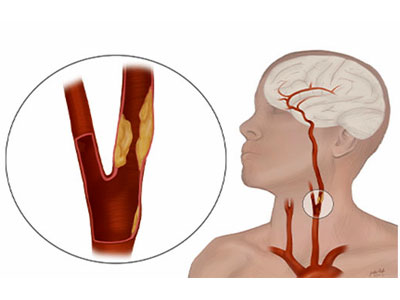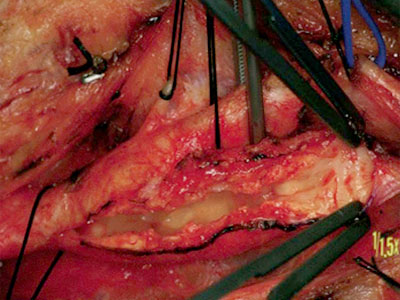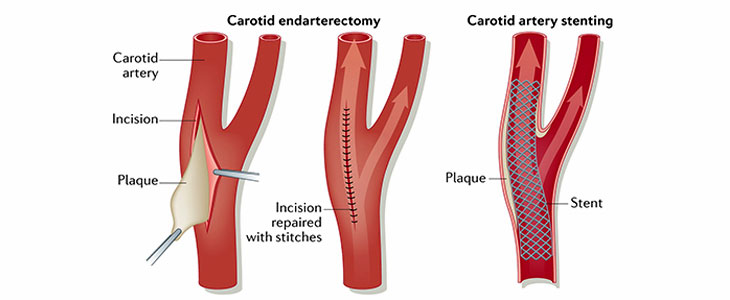Carotid Artery Stenosis



Carotid artery stenosis is a condition where the carotid arteries — the major blood vessels in the neck that supply blood to the brain — become narrowed due to atherosclerosis (buildup of plaque composed of cholesterol, calcium, and other substances). This narrowing reduces blood flow to the brain and increases the risk of stroke or transient ischemic attack (TIA).
Often, carotid artery stenosis develops silently without noticeable symptoms until it becomes severe or causes a neurological event. In some cases, it may present with warning signs such as sudden weakness or numbness on one side of the body, difficulty speaking, vision disturbances, or dizziness. These symptoms require urgent medical attention.
Risk factors include high blood pressure, high cholesterol, diabetes, smoking, obesity, and a family history of cardiovascular disease. Early detection through physical examination and diagnostic imaging (such as Doppler ultrasound, CT angiography, or MRI) is crucial in preventing stroke-related complications. A Vascular & Endovascular Surgeon specializes in the diagnosis and treatment of this condition, offering both preventive strategies and advanced surgical or minimally invasive interventions tailored to each patient’s needs.
Symptoms
- Sudden numbness or weakness in the face or limbs, often on only one side of the body
- Sudden trouble speaking and understanding
- Sudden trouble seeing in one or both eyes
- Sudden dizziness or loss of balance
- Sudden, severe headache with no known cause
- Recurrent stroke
Treatment Types for Carotid Artery Stenosis
Treatment depends on the severity of narrowing, symptoms, and overall health condition:
1. Medical ManagementThrough timely diagnosis, expert intervention, and long-term management, a Vascular & Endovascular Surgeon plays a crucial role in preventing strokes and improving patient outcomes in carotid artery stenosis.